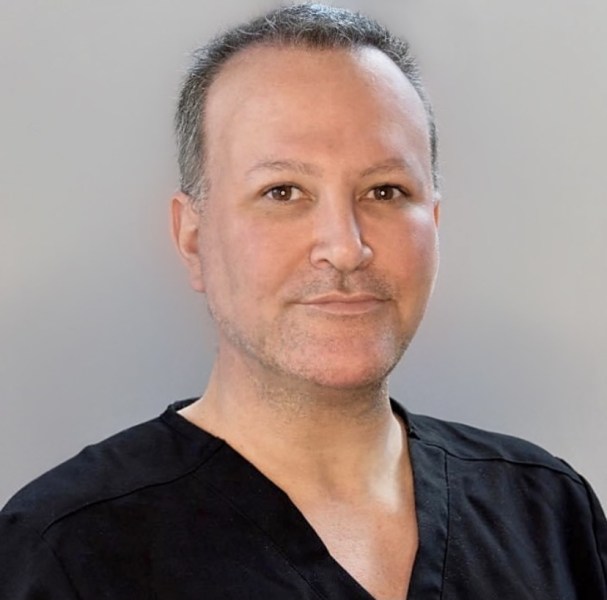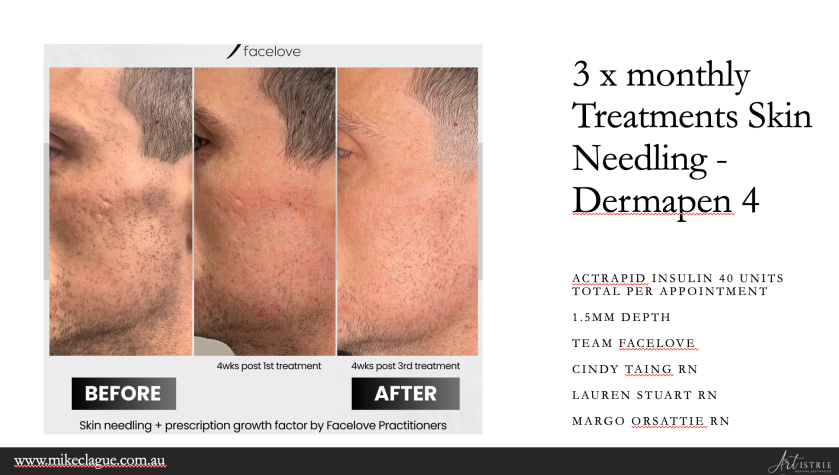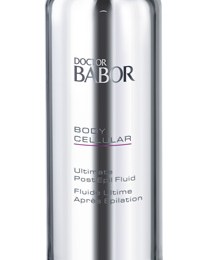A novel approach for the therapeutic medication.
Collagen, the fundamental protein responsible for maintaining tissue integrity, has long been a focal point in medical research, as its synthesis is pivotal for wound repair and tissue regeneration. In recent years, investigations into the application of topical insulin have garnered substantial interest, as this hormone, conventionally associated with glycemic control, unveils its intriguing potential as a key mediator in collagen production.
Within its use in dermatology, new techniques explore the fascinating connection between topical insulin and collagen synthesis, clinical implications, and also the future prospects of this novel therapeutic approach.
We caught up with Mike Clague, Aesthetic Nurse BSc and Founder of Facelove Medispa, to discuss this innovative topic.

What are the benefits of applying insulin topically following laser or skin needling treatments?
- Speeds up keratinocyte activity
- Closes the wound faster – less down time with CO2 laser resurfacing, RF microneedling or skin needling
- Results in enhanced neo-collagenesis, we see better long term results and more collagen production long term, reduced wrinkles and acne scarring
Is there more advantageous modalities for it to be applied after? Such as cO2 laser vs RF microneedling?
Personally, I see the best results, believe it or not, from microneedling with a skin needling device over 4 sessions, once monthly – which is significantly advantageous for results in the published study vs PRP. But, Professor Greg Goodman, myself and my team at Facelove Medispa have seen great results across Fractional CO2 laser, Radiofrequency microneedling and any similar treatment that involves wounding the dermis.

What safety considerations must be made, or any other considerations when it comes to applying topical insulin?
In the above mentioned study, they measured Blood Glucose Levels – BSL – without impact. Anecdotally at the Dermatology Institute of Victoria and at Facelove Medispa, we have measured BSL for 4 months. We see about a 0.5mmol drop in BSL. So, therefore, not a risk.
However, we do not treat Type 1 or Type 2 Diabetics.
It ALSO should not be injected, and should only be applied in the form of topical application and be massaged or rubbed into the skin.
How many repeat sessions are typically required, and at what intervals?
In the published study we see 4 treatments, one per month, with a 1.5mm dermal roller. In my own experience at Facelove Medispa, we would package 4 treatments, one per month. The extra charge for insulin Actrapid 80 units is $100. The results are impressive.
Insulin has been used in wound care for many years. Only now do we see the improvements in aesthetics, particularly in terms of collagen stimulation.
Read the latest issue of SPA+CLINIC below:
There are 5 ways you can catch up with SPA+CLINIC
- Our quarterly print magazine, delivered to your door. Subscribe here.
- Our website, which is updated daily with its own completely unique content and breaking news.
- Our weekly newsletter – free to your inbox! Subscribe here.
- Our digital magazine – click here to view previous issues.
- Our social media – see daily updates on our Instagram, Facebook & Linkedin



